Extinction Rebellion Protests: What happened? (original) (raw)
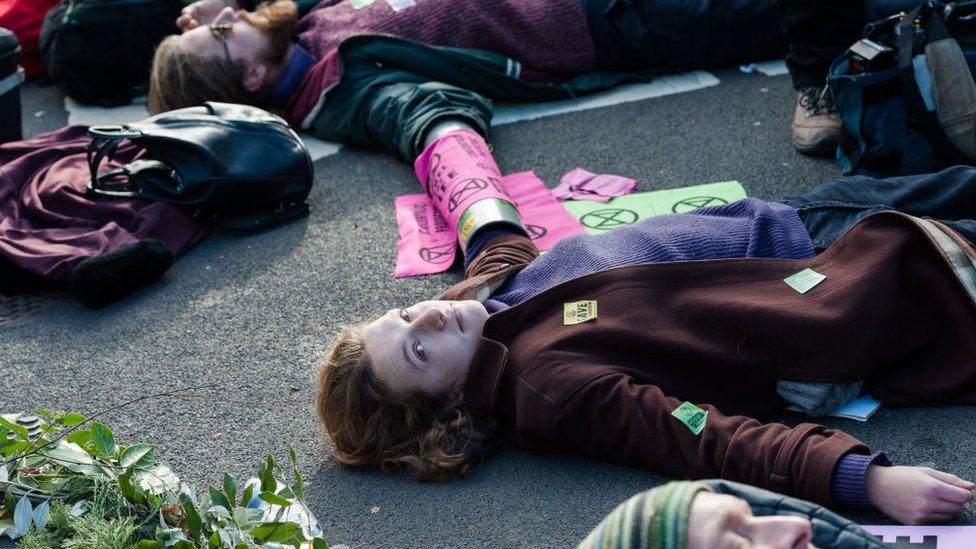 Image source, Getty Images
Image source, Getty Images
Image caption,
Activists staged peaceful protests by lying down on busy roads across the capital
Ten days of marches, arrests and widespread disruption have finished in London as the Extinction Rebellion group has ended its protests across the city.
As the sites the group occupied return to normal, we look at the impact the action had.
Who are Extinction Rebellion?
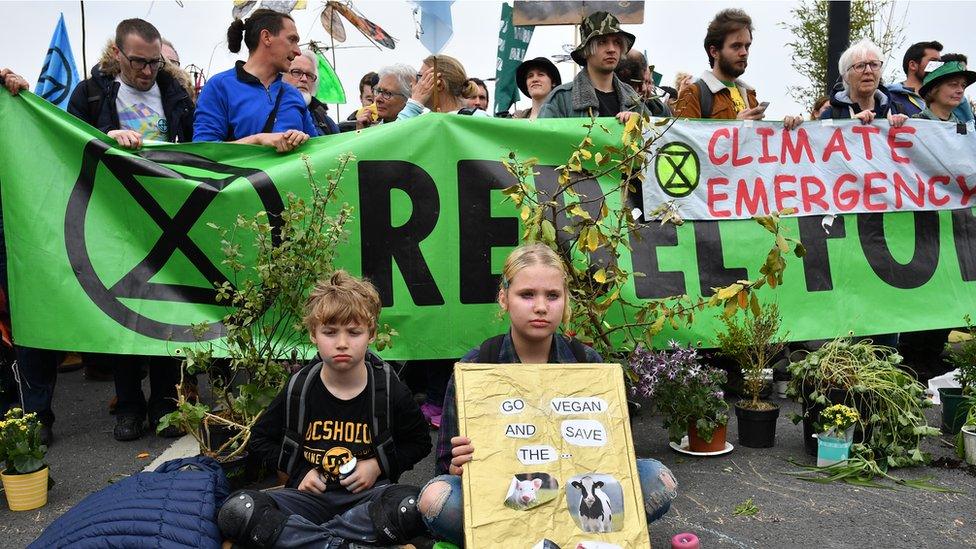 Image source, Getty Images
Image source, Getty Images
Image caption,
Most members of Extinction Rebellion are volunteers, according to the group, who say it is mostly financed through crowdfunding
The group describes itself as an "international movement" that uses "non-violent civil disobedience" to bring issues such as climate change to the fore.
Organisers say they want to see "radical change" to "minimise the risk of human extinction and ecological collapse".
The movement started in the UK in 2018 after the release of a report on global warming by The Intergovernmental Panel on Climate Change - part of the United Nations.
What do they want?
Media caption,
Extinction Rebellion protesters reach Parliament Square
Extinction Rebellion claims the government is guilty of "criminal inactivity" in addressing the climate change "crisis" and has made three key demands:
- The government must declare an "emergency" and work with "other institutions" to make changes
- The UK must enact legally binding policies to reduce carbon emissions to net zero by 2025
- A citizens' assembly must be formed to "oversee the changes" needed to achieve this goal
The group says that under the current system the UK is "headed for disaster", with climate change due to cause food shortages and "destroy communities".
What did they do?
Media caption,
Protesters blocked the London Stock Exchange
The demonstrations began at 18:00 BST on 15 April, with protesters blocking roads at Marble Arch, before moving on to Oxford Circus, Waterloo Bridge, Piccadilly Circus and Parliament Square.
Activists also caused more than £6,000 of damage at the Shell headquarters in Belvedere Road.
Organisers had urged members to block five "high-profile locations" by booking time off work or going on strike.
"Think festival, arrange to stay with friends or bring camping gear," the group's website said.
Over the next 10 days activists glued themselves to and sat on top of trains on London's light railway, marched on Heathrow Airport, staged "die-ins", glued themselves to the entrance of the London Stock Exchange and chained themselves to Jeremy Corbyn's home.
How did the protests affect London?
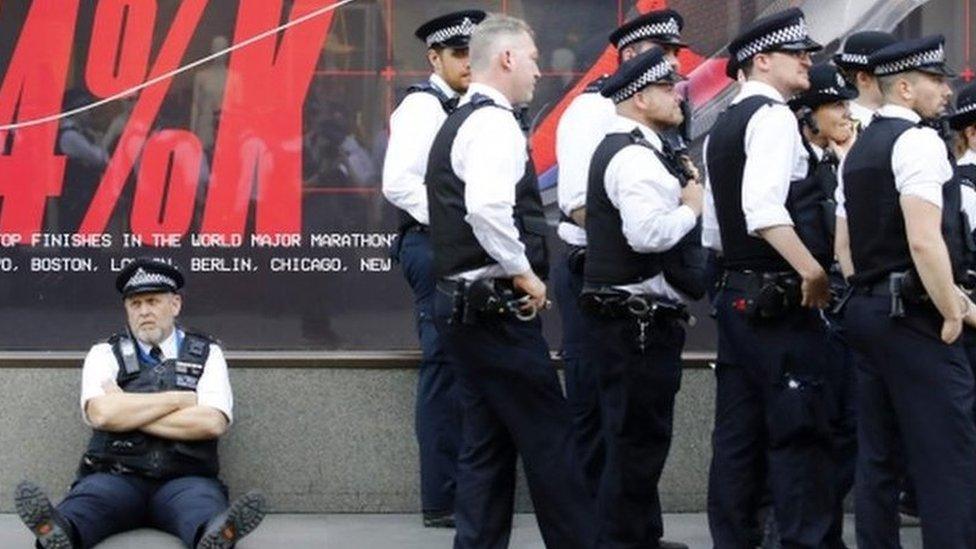 Image source, AFP
Image source, AFP
Image caption,
The Met Police requested about 200 extra officers from neighbouring forces in Essex, Kent, Hampshire and Sussex
The government said the protests disrupted the lives of "many hundreds of thousands of hard-working Londoners".
Police rest days were cancelled over the Easter bank holiday, as more than 1,000 officers were deployed across the city.
As of Thursday afternoon, a total of 1,130 activists were arrested for a range of public order offences, according to police.
So far 69 people have been charged.
Who got involved?
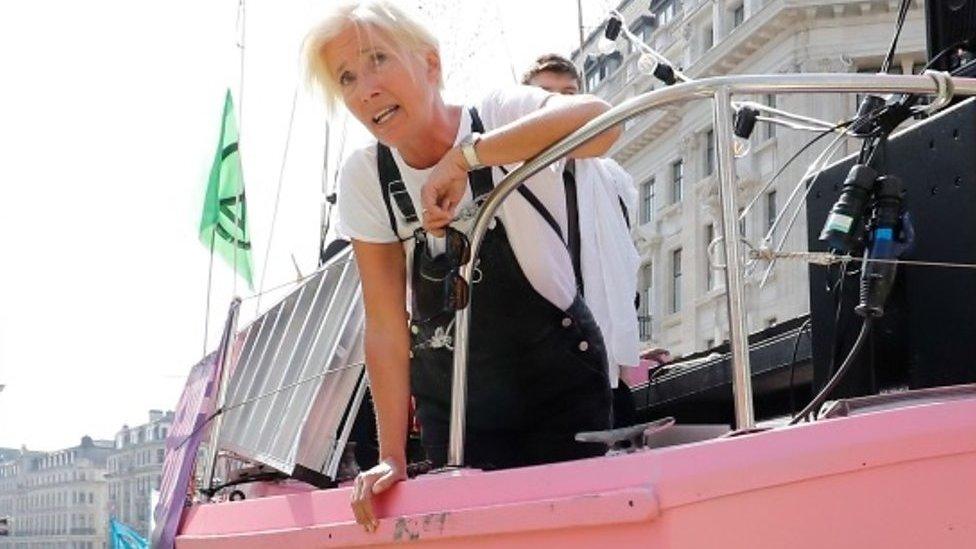 Image source, Getty Images
Image source, Getty Images
Image caption,
Dame Emma Thompson joined the protests on Saturday
In amongst the group's estimated tens of thousands of protesters, Hollywood stars, global climate change campaigners and Olympians appeared at the demonstrations.
Swedish teenage activist Greta Thunberg, who gained global attention after staging a climate change protest at her school, came to London to tell demonstrators: "Keep going. You are making a difference."
She also addressed Parliament, reprimanding the UK for supporting shale gas fracking, greater exploitation of North Sea oil and gas fields, and expanding airports.
On Waterloo Bridge, Olympic gold medal-winning canoeist Etienne Stott was one of the activists who had to be carried off by police officers.
Actress Dame Emma Thompson also joined climate change protesters on board a pink boat parked up in the centre of Oxford Circus.
What happens next?
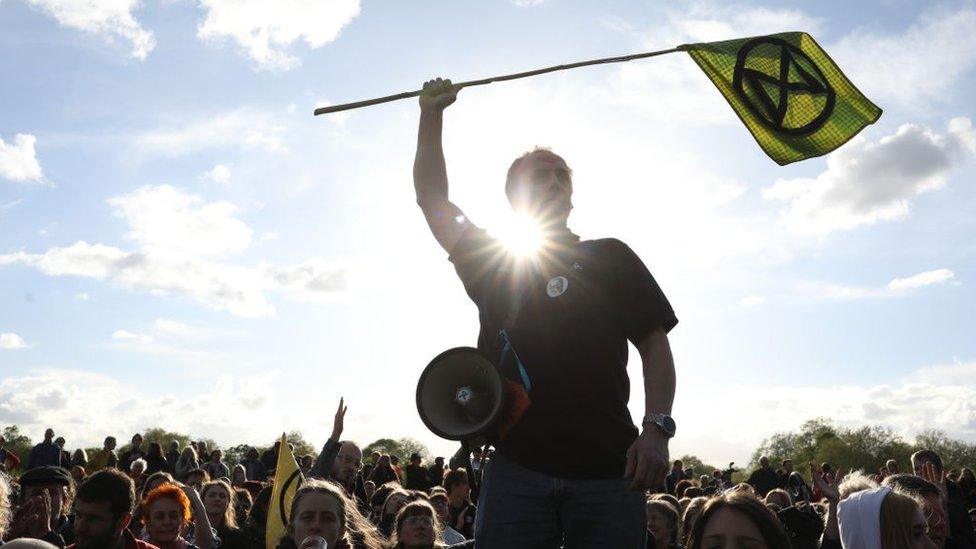 Image source, Getty Images
Image source, Getty Images
Image caption,
Crowds gathered at Speaker's Corner in Hyde Park to mark the end of the protests
Following a "closing ceremony" for the protests in Hyde Park, Extinction Rebellion said it was time for members to "go back to their communities".
However, it added the public could "expect more actions very soon".
Responding to a Parliamentary question on the protests from former Labour leader Ed Milliband, the government said it hoped to work with all parties to make progress with climate change.
Environment Minister Michael Gove said the activists' "point had been made".
He added it was time to have "a serious conversation about what we can do to collectively deal with this problem".
Mr Milliband said global warming would get "far worse" if the government did not act with "greater urgency".
Related internet links
The BBC is not responsible for the content of external sites.